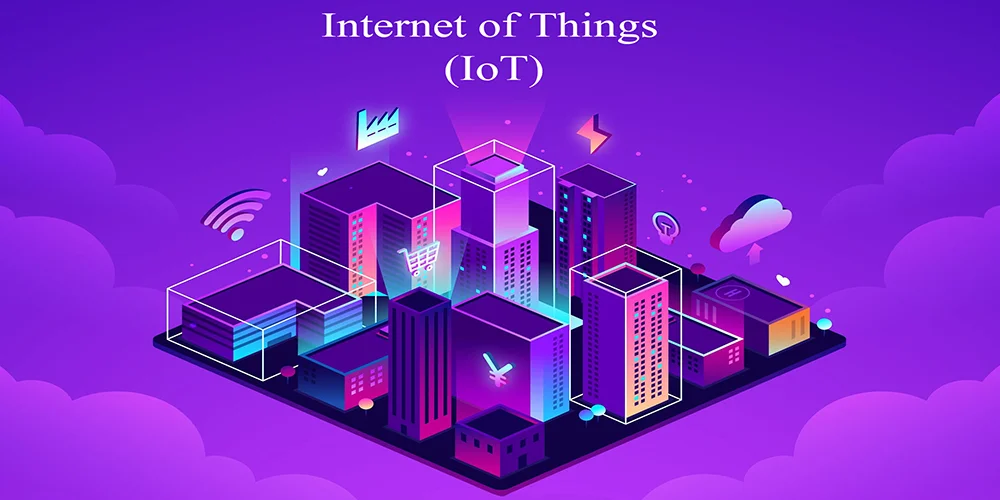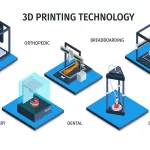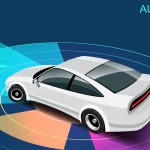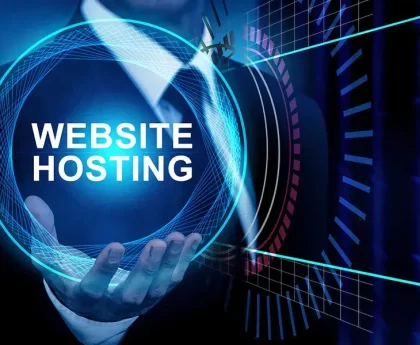Internet of Things: (IoT) refers to a network of interconnected physical objects or “things” that are embedded with sensors, software, and other technologies, allowing them to collect and exchange data with other devices and systems over the internet. These objects can be everyday items such as household appliances, industrial machines, vehicles, wearable devices, and more.
Types of Internet of Things: (IoT)
The Internet of Things (IoT) encompasses a wide variety of devices and applications across various industries. These devices can be categorized into several types based on their functions and applications.
Here are some common types of IoT devices and applications:
- Consumer IoT (CIoT):
– Consumer IoT devices are designed for personal use and are often integrated into everyday life.
– Examples include smart home devices such as smart thermostats, connected lighting, voice assistants (e.g., Amazon Alexa, Google Assistant), and wearable fitness trackers. - Industrial IoT (IIoT):
– Industrial IoT focuses on the use of IoT technology in industrial settings to improve efficiency, productivity, and safety.
– Examples include sensors and monitoring devices in manufacturing plants, predictive maintenance systems for machinery, and connected supply chain logistics. - Healthcare IoT (HIoT):
– Healthcare IoT involves devices and applications used in the medical and healthcare sectors.
– Examples include remote patient monitoring devices, smart medical equipment, and wearable health trackers. - Smart Cities:
– Smart city IoT applications aim to enhance urban infrastructure and services.
– Examples include smart traffic management systems, waste management, smart street lighting, and environmental monitoring for air quality and pollution control. - Agriculture IoT (AgriTech):
– IoT is used in agriculture to optimize crop management, livestock monitoring, and resource utilization.
– Examples include soil moisture sensors, GPS-guided tractors, and livestock tracking devices. - Energy Management:
– IoT plays a crucial role in energy management and conservation.
– Examples include smart meters for electricity and water, energy-efficient HVAC systems, and grid management systems. - Retail and Supply Chain:
– Retail IoT applications improve inventory management, customer experience, and supply chain visibility.
– Examples include RFID tags for inventory tracking, smart shelves, and beacon technology for personalized shopping experiences. - Transportation and Automotive:
– IoT is transforming transportation through vehicle connectivity and smart transportation systems.
– Examples include connected cars, telematics for fleet management, and traffic monitoring for congestion reduction. - Environmental Monitoring:
– IoT is used to monitor and protect the environment by collecting data on various parameters.
– Examples include air quality sensors, water quality sensors, and wildlife tracking devices. - Smart Buildings:
– IoT technology is applied to buildings for improved energy efficiency, security, and occupant comfort.
– Examples include building automation systems, smart locks, and occupancy sensors. - Supply Chain and Logistics:
– IoT devices and applications are used to enhance supply chain visibility and efficiency.
– Examples include asset tracking, temperature monitoring for perishable goods, and real-time shipment tracking. - Wearable Technology:
– Wearable IoT devices are worn on the body and can monitor health, fitness, and provide notifications.
– Examples include smartwatches, fitness trackers, and augmented reality glasses.
These are just some of the many types of IoT devices and applications that are transforming various industries and aspects of daily life. IoT technology continues to evolve, creating new opportunities for innovation and improving efficiency in diverse fields.
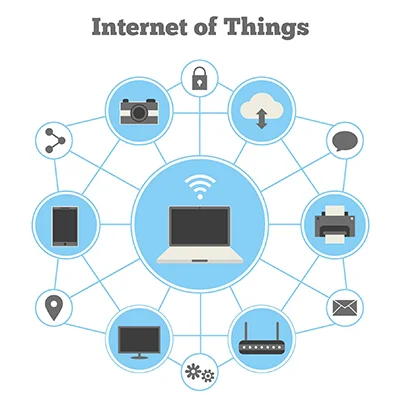
Benefits of Internet of Things (IoT)
The Internet of Things (IoT) offers a wide range of benefits across various industries and applications.
Here are some of the key advantages of IoT:
- Data Collection and Analysis: IoT devices collect vast amounts of data from sensors and other sources, providing valuable insights into various processes, environments, and behaviors. This data can be used for analytics, decision-making, and improving efficiency.
- Efficiency and Productivity: IoT enables automation and optimization of processes, resulting in increased efficiency and productivity. This is particularly valuable in industries like manufacturing, where real-time monitoring and control can reduce downtime and waste.
- Cost Reduction: IoT can help reduce operational costs through predictive maintenance, energy management, and resource optimization. Identifying and addressing issues before they become critical can save companies significant amounts of money.
- Improved Customer Experience: IoT enables businesses to better understand customer behavior and preferences, leading to more personalized products and services. For example, in retail, IoT can provide personalized shopping experiences and recommendations.
- Safety and Security: IoT devices can enhance safety and security by monitoring and controlling critical systems and environments. This is relevant in areas such as home security, industrial safety, and emergency response systems.
- Environmental Impact: IoT can contribute to sustainability efforts by optimizing resource usage and reducing waste. Smart energy management, for instance, can lead to lower energy consumption and reduced environmental impact.
- Remote Monitoring and Control: IoT allows for remote monitoring and control of devices and systems. This is especially valuable in industries like healthcare, where remote patient monitoring can improve patient care and reduce hospital readmissions.
- Supply Chain Visibility: IoT provides real-time visibility into supply chains, allowing companies to track inventory, shipments, and logistics more effectively. This reduces bottlenecks and improves overall supply chain efficiency.
- Predictive Maintenance: IoT sensors can predict when equipment or machinery is likely to fail, enabling preventive maintenance and minimizing unplanned downtime. This is crucial in industries like manufacturing and utilities.
- Healthcare and Wellness: IoT enables the development of wearable devices and medical sensors that can monitor health conditions and transmit data to healthcare providers. This can lead to early diagnosis and improved patient outcomes.
- Smart Agriculture: In agriculture, IoT devices and sensors can optimize irrigation, monitor soil conditions, and track livestock, leading to higher crop yields and more efficient resource usage.
- Traffic Management: IoT is used to manage traffic flow in smart cities, reducing congestion, improving transportation efficiency, and lowering fuel consumption.
- Accessibility and Convenience: IoT enhances convenience and accessibility by enabling remote control and automation of devices. For example, smart home systems allow homeowners to control lighting, heating, and security remotely.
- Innovation and New Business Models: IoT opens up opportunities for innovation and new business models. Startups and established companies alike can create IoT-based solutions and services, leading to economic growth and job creation.
- Data-Driven Decision-Making: The data generated by IoT devices supports data-driven decision-making, helping organizations make informed choices and respond to changing conditions more effectively.
Overall, IoT has the potential to transform industries, improve the quality of life, and drive economic growth by harnessing the power of connected devices and data-driven insights. However, it also poses challenges related to data privacy, security, and standardization, which need to be addressed for its continued success.
How does it Works?
The Internet of Things (IoT) works through a combination of hardware, software, and network connectivity to enable devices to collect and exchange data over the internet.
Here’s a basic overview of how it works:
- IoT Devices: These are physical objects or “things” that are equipped with sensors, actuators, and communication modules. Sensors can collect data such as temperature, humidity, motion, and more, while actuators can perform actions based on commands received. Examples of IoT devices include smart thermostats, wearable fitness trackers, and industrial sensors.
- Sensors and Data Collection: IoT devices use sensors to collect data from their environment or from the objects they interact with. For instance, a smart thermostat may have temperature and humidity sensors to monitor the climate in a room.
- Data Processing: The data collected by IoT devices is processed either locally on the device (edge computing) or transmitted to a cloud-based server for more extensive processing. In the case of edge computing, the device itself may analyze the data and take immediate actions based on predefined rules.
- Connectivity: IoT devices are connected to the internet or other communication networks using various technologies such as Wi-Fi, cellular networks, Bluetooth, Zigbee, LoRa, or satellite connections. This connectivity allows them to transmit and receive data.
- Communication Protocols: IoT devices use communication protocols to exchange data with other devices and systems. Common IoT protocols include HTTP, MQTT (Message Queuing Telemetry Transport), CoAP (Constrained Application Protocol), and others.
- Data Transmission: IoT devices transmit the collected data to a central server, cloud platform, or another device through the chosen communication protocol. This data can be sent in real-time or on a scheduled basis, depending on the application.
- Data Storage: In cloud-based IoT systems, the data is stored in databases or data lakes, where it can be accessed and analyzed later. This data storage enables historical analysis and reporting.
- Data Analysis and Insights: Once the data is collected and stored, it can be analyzed using various analytics tools and algorithms. This analysis can provide valuable insights, detect patterns, and trigger actions or alerts.
- User Interfaces: Users can access IoT data and control devices through user interfaces such as mobile apps, web dashboards, or voice commands. These interfaces allow users to monitor and interact with their IoT devices remotely.
- Automation and Control: IoT systems often include rules and automation logic. Based on data analysis or predefined rules, IoT devices can trigger actions, send alerts, or make decisions autonomously. For example, a smart home security camera can send an alert to the homeowner’s smartphone when it detects motion.
- Security and Authentication: IoT devices and systems must implement robust security measures to protect data and prevent unauthorized access. This includes encryption, authentication, and secure communication protocols.
- Scalability: IoT systems can scale from a few devices to millions of devices, depending on the application. Cloud-based platforms and edge computing technologies are designed to handle the scalability requirements of IoT deployments.
In summary, IoT works by connecting physical objects to the internet, allowing them to collect data, communicate with other devices and systems, and provide valuable insights, automation, and control. IoT has a wide range of applications across industries and continues to evolve as new devices, connectivity options, and analytics capabilities are developed.
Is IoT secure?
The security of the Internet of Things (IoT) has been a subject of concern and scrutiny due to the increasing number of connected devices and the potential risks associated with them. While IoT offers numerous benefits, it also presents several security challenges that need to be addressed to ensure the safety and privacy of users and their data.
Here are some key aspects of IoT security:
- Device Vulnerabilities: IoT devices can be vulnerable to security threats due to factors such as weak or default passwords, lack of regular software updates, and inadequate security mechanisms. Many manufacturers prioritize functionality and cost over security, which can result in insecure devices.
- Data Privacy: IoT devices collect and transmit data, often of a personal or sensitive nature. Data privacy is a significant concern, and unauthorized access to this data can result in privacy breaches and identity theft.
- Network Security: The transmission of data between IoT devices and central servers or other devices can be susceptible to interception or hacking if not properly secured. Secure communication protocols and encryption are essential to protect data in transit.
- Authentication and Authorization: Ensuring that only authorized users or devices can access and control IoT devices is critical. Weak or absent authentication mechanisms can lead to unauthorized access and control of devices.
- Firmware and Software Updates: IoT devices need to be regularly updated with security patches and firmware updates to address vulnerabilities and bugs. However, many IoT devices lack mechanisms for easy and automated updates.
- Supply Chain Risks: The supply chain for IoT devices can be complex, making it susceptible to tampering and the insertion of malicious components during manufacturing or distribution.
- DDoS Attacks: IoT devices can be compromised and used to launch Distributed Denial of Service (DDoS) attacks on other systems or services. The sheer number of IoT devices makes them an attractive target for such attacks.
- Lack of Security Standards: The absence of uniform security standards and best practices for IoT devices and platforms can result in inconsistent security implementations.
- Lifecycle Management: Proper management of IoT devices throughout their lifecycle, including secure decommissioning and disposal, is essential to prevent them from becoming security risks.
Addressing IoT Security:
To enhance IoT security, several measures can be taken:
- Strong Authentication: Implement robust authentication mechanisms, including secure login credentials, biometrics, and multi-factor authentication.
- Encryption: Encrypt data both at rest and in transit using strong encryption algorithms.
- Regular Updates: Ensure that IoT devices receive regular security updates and patches to address vulnerabilities.
- Access Control: Limit access to devices and data based on user roles and permissions.
- Security by Design: Manufacturers should prioritize security in the design and development of IoT devices from the outset.
- Network Segmentation: Segment IoT devices from critical network segments to limit potential damage from security breaches.
- Security Standards: Encourage the development and adoption of security standards for IoT devices and platforms.
- Awareness and Education: Raise awareness about IoT security risks among users and provide guidelines for secure IoT device usage.
IoT security is an ongoing challenge, and as the IoT ecosystem continues to grow, it’s crucial for manufacturers, developers, and users to prioritize security and take proactive measures to mitigate risks and vulnerabilities. Collaboration among industry stakeholders and the development of robust security practices are essential to ensure a more secure IoT landscape.
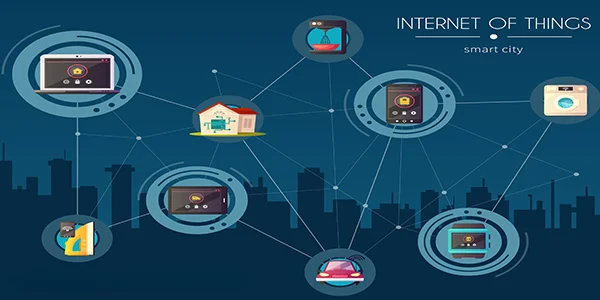
What is the role of IoT in smart cities?
The Internet of Things (IoT) plays a pivotal role in the development and operation of smart cities by leveraging technology to enhance urban infrastructure, services, and quality of life for residents.
Here are several key roles of IoT in smart cities:
- Urban Infrastructure Monitoring: IoT sensors and devices are deployed throughout the city to monitor critical infrastructure elements such as bridges, roads, buildings, and utilities. This continuous monitoring helps detect structural issues, wear and tear, and potential hazards in real-time, allowing for preventive maintenance and improved safety.
- Traffic Management: IoT-based traffic management systems collect data from various sources, including vehicle sensors, traffic cameras, and road sensors. This data is used to optimize traffic flow, reduce congestion, minimize travel times, and improve overall transportation efficiency.
- Smart Street Lighting: IoT-connected streetlights can adjust their brightness based on ambient light conditions and traffic flow. This not only saves energy but also enhances safety by providing better visibility at night.
- Waste Management: IoT-enabled waste bins equipped with sensors can alert waste management services when they are full, optimizing collection routes and reducing unnecessary trips. This leads to cost savings and a more efficient waste management process.
- Environmental Monitoring: IoT sensors can continuously monitor environmental factors such as air quality, noise levels, and pollution. This data helps cities address environmental challenges, implement policies to improve air quality, and respond to environmental incidents promptly.
- Public Safety and Emergency Response: IoT devices, including security cameras and sensors, enable improved public safety. They can help monitor public spaces, detect unusual activities, and respond to emergencies more effectively.
- Energy Management: IoT can help cities reduce energy consumption by optimizing the operation of public buildings, street lighting, and utilities. Smart grids and energy-efficient systems can lead to cost savings and reduced carbon emissions.
- Water Management: IoT sensors and smart meters can monitor water quality, detect leaks, and optimize water distribution in urban areas, contributing to water conservation and efficiency.
- Public Transportation: IoT-powered public transportation systems provide real-time information to commuters, making it easier to plan routes and reduce waiting times. This encourages the use of public transport and reduces traffic congestion.
- Healthcare and Public Services: IoT can support healthcare services with remote patient monitoring and emergency response systems. It can also enhance public services by optimizing resource allocation and improving service delivery.
- Citizen Engagement: IoT can facilitate citizen engagement by providing data and insights to residents through mobile apps and online platforms. Citizens can access information about traffic, air quality, and other urban data to make informed decisions.
- Sustainability and Resilience: IoT technologies support sustainability efforts in smart cities by optimizing resource usage, reducing waste, and promoting eco-friendly practices. Additionally, IoT can enhance a city’s resilience to natural disasters and other emergencies by providing real-time data and coordination.
Overall, IoT is a fundamental enabler of smart cities, contributing to improved quality of life, resource efficiency, and sustainability. As cities continue to grow and face evolving challenges, IoT technologies will play an increasingly vital role in urban planning and management.
Cloud Computing: Definition, Types, Scope, & Benefits

